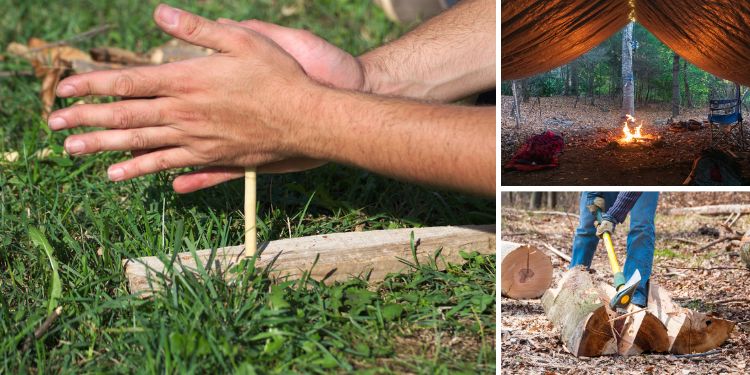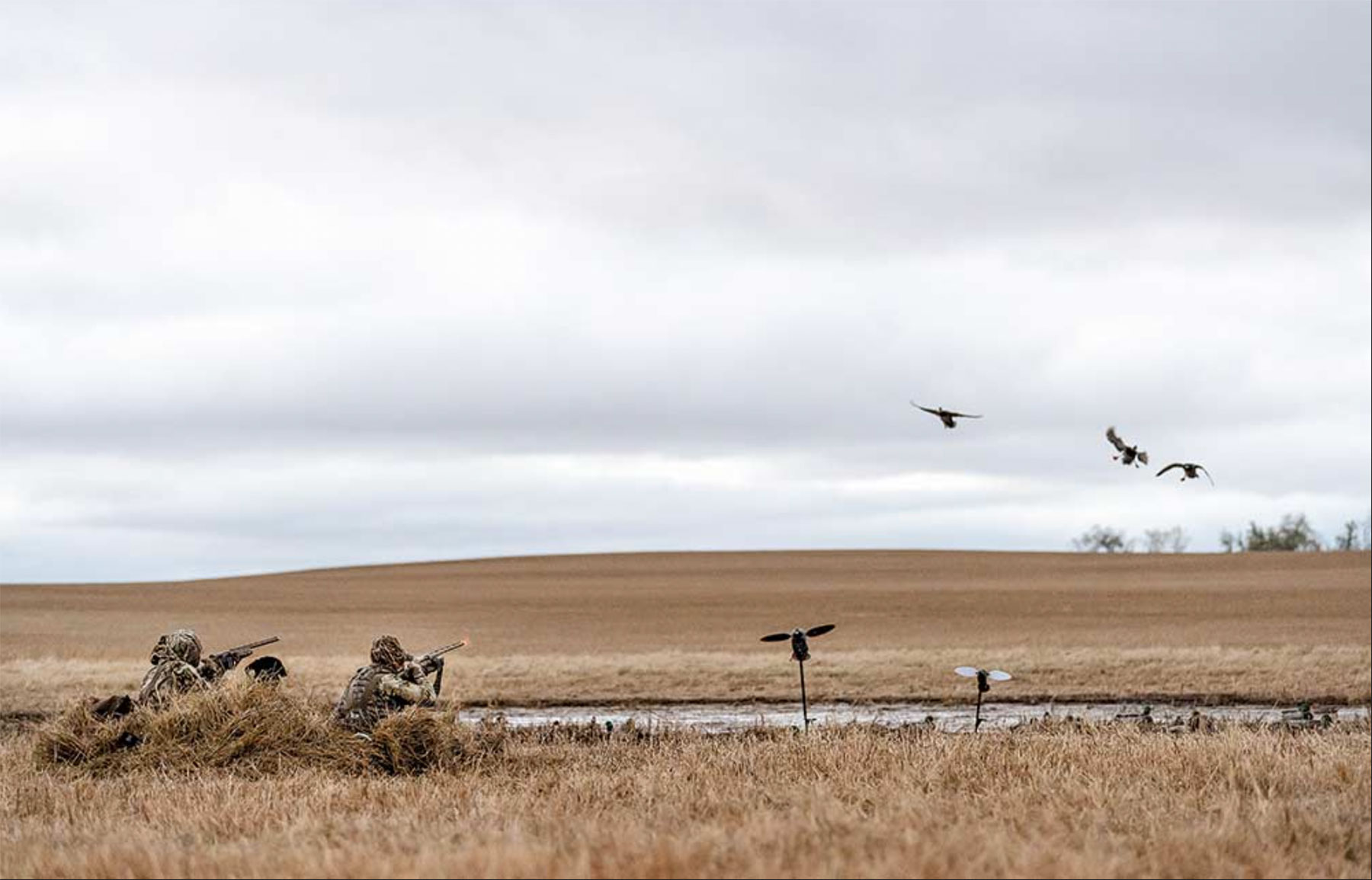Scientists Photograph Giant Python Swallowing a Full-Sized Whitetail Whole in First-of-Its-Kind Discovery

After 12 years of tracking and hunting Burmese pythons in South Florida, it takes a lot to get Ian Bartoszek riled. A wildlife biologist and the science coordinator for the Conservancy of Southwest Florida, Bartoszek would say the same thing about Ian Easterling, his right-hand man and fellow biologist on the project.
“So when Ian started yelling with excitement, I knew something was up,” Bartoszek tells Outdoor Life about the encounter they had with a python on Dec. 19, 2022 — one that is the center of a new study and confirms just how destructive these invasive snakes can be on native wildlife.
It was the middle of python breeding season and a typical day for the snake removal team, which focuses on a region near Naples that Bartoszek calls the Western Everglades. They were using telemetry equipment to track one of their male scout snakes, Ronan, in hopes that it would lead them to a large breeding female, which is their prime target for removal. The team found that and more as they neared the scout snake and dropped off a levee into a drained retention pond.
“We turned the corner, and Ian yells, ‘She’s got…she’s got a DEER!”
Bartoszek says that what they saw next was the most intense thing he’s ever witnessed in the field.
“We see this large female python, and she’s about halfway through swallowing a full-sized whitetail deer,” says Bartoszek, who hunkered down with Easterling and their two interns to watch and photograph the ordeal. “Once it realized we weren’t a threat, [the snake] proceeded to finish its meal. And it’s hard to describe unless you’ve seen it with your own eyeballs, but this was as real and primal as it gets … We watched it engulf this animal all the way down to the tips of its hooves and swallow it whole.”
For Bartoszek, the sight was both shocking and validating. Shocking because he says no Florida-based scientist had ever recorded a python swallowing a full-sized whitetail deer. He has for years, however, suspected that this kind of predation is happening on a wide scale in South Florida, and his team has found evidence of pythons eating smaller deer in the past. (There is also abundant proof of pythons eating full-sized deer in their native ranges of Africa, Asia, and Australia.)
“For me, personally, I’ve been beating this snake drum for over a decade now, telling people, ‘Hey, this is a thing. They’re eating our deer on a large scale,’” Bartoszek says. “A lot of those people took a while to catch up. But this is what we’re seeing in real time.”
Read Next: Largest Python Ever Captured in Florida Is Nearly 18 Feet Long
Roughly 10 years ago, Bartoszek and his team caught a 31-and-a-half-pound Burmese python that spit up a 35-pound whitetail. A follow-up study found that this was the largest prey-python size ratio ever recorded for the Burmese python. And in July 2022, they found hoof cores and hair from an already-consumed deer in the belly of a 215-pound snake, which remains the largest Burmese python (by weight) ever caught in the Sunshine State. The December discovery was different, however, because it was a full-sized deer, and the researchers were able to witness the swallowing process in person. Bartoszek says it took around 30 minutes for the snake to get the back half of the deer’s body into its gullet.
“The other intense thing was how the snake was positioning itself, and how the back portion of its coil near the tail was corkscrewing,” Bartoszek explains. “It was grabbing the deer’s hind limbs and using that back part of its body to feed the deer into its open mouth. They are impressive beasts.”
After the deer was fully swallowed, he and Easterling held down the snake and pressed on it until it regurgitated its meal, which made the snake easier to carry out of the field. They later weighed the buck at 77 pounds. (South Florida whitetails typically run smaller than they do in other places, Bartoszek says.) The female python, meanwhile, weighed around 115 pounds and was just under 15 feet long.
“This just reinforces what we know,” says Bartoszek. “And if anybody’s on the fence about what these animals are doing in South Florida, they are clearly eating their way through the food web of the Everglades. And that includes whitetail deer.”
Squeezing the Science Out of It
In addition to producing some of the wildest photos ever captured of a Burmese python in Florida, the encounter was an opportunity for Bartoszek’s team to contribute to the growing body of research around the species. After euthanizing the python and bringing it back to the lab, Bartoszek called Dr. Bruce Jayne at the University of Cincinnati, who has conducted studies into a variety of snake species’ maximum gape — the max diameter a snake is able to open its mouth due to its disconnected jawbones and flexible skin.
“He [Dr. Jayne] was the first person to see those photos and videos, and he was blown away,” says Bartoszek, who kept the snake’s head and part of its neck frozen in a block of ice. “When he came down maybe a month or so later, we had that snake, along with two other really large snakes that came from the Big Cypress area. One was the 19-foot snake that those young guys donated to us, the longest python ever measured in Florida.”
Using custom-made plastic probes in increasing sizes, Dr. Jayne shoved bigger and bigger probes into the mouths of the three giant pythons. He continually measured a snake’s gape size until the probe would no longer fit (or it caused tissue damage), and that final measurement would represent the python’s maximum gape.
Jayne found that all three snakes had a maximum gape diameter of 26 cm, and the results were published in the peer-reviewed scientific journal Reptiles and Amphibians in August. This number is significant, Bartoszek explains, because the previously recorded maximum gape diameter for Burmese pythons was 22 cm.
“And we don’t know. Some of these snakes could exceed that [26 cm], that’s just what we’ve been able to put a measurement on. So, now we have a new benchmark,” Bartoszek says. “But if there’s one thing I’ve learned studying these snakes, it’s to not underestimate the Burmese python.”
What This New Benchmark Means for Florida Wildlife
By better understanding the limits of what a Burmese python can fit in its mouth, Bartoszek and other python researchers can better predict the ecological impact the invasive snakes will have as they spread into new areas. And the more closely they look at those impacts, the more severe Florida’s python problem seems.
As an example, years ago Florida researchers had been hearing claims about the decimation of meso mammals, which are medium-sized critters like raccoons, rabbits, and possums.
“Well, a respected researcher thought that sounded far-fetched, so he got a bunch of marsh rabbits and he put collars on them, and he let them go in the core Everglades area,” Bartoszek says. “Within six months, 77 percent of those rabbits were found inside the bellies of pythons. And he became a believer after that.”
Bartoszek thinks the same thing could be going on with whitetail deer, but he says there hasn’t been a definitive study using collared deer within the core python range of the Everglades. He hypothesizes that if someone were to conduct such a study, “many of those collars would turn up inside a python.” He also reiterates that past discoveries of fawns and smaller deer inside other, smaller pythons proves that the snakes are learning to hunt whitetails from a young age.
This is concerning for local deer populations, which are currently on the decline in both the southern portion of Big Cypress National Preserve and Everglades National Park, according to the Florida Fish and Wildlife Conservation Commission. Both the preserve and the national park are within the core ranges for Burmese pythons in the state. It’s also concerning from a broader ecological perspective, since whitetail deer are the primary prey of the endangered Florida panther.
Read Next: Monsters in the Marsh
All of this drives home the importance of the removal work that Bartoszek and other python hunters are doing. To put a rough figure on that work, Bartoszek’s team alone has removed roughly 36,000 pounds (or 18 tons) of python from the Florida landscape, and they’re getting better at using male scout snakes to find and remove the big breeding females. But Bartoszek says that part of the challenge in trying to eradicate Burmese pythons is having to constantly adapt what you think you know about them.
“Our native wildlife did not evolve with a large apex-predator snake in the equation, and they don’t have the situational awareness for how to deal with that, so they’re vulnerable,” Bartoszek says. “Well, there’s a similar parallel in the natural sciences. Where, if you haven’t seen this yourself, or seen evidence through shared images like these, you would be hard-pressed to think that this animal is capable of doing something like that.”
Read the full article here







